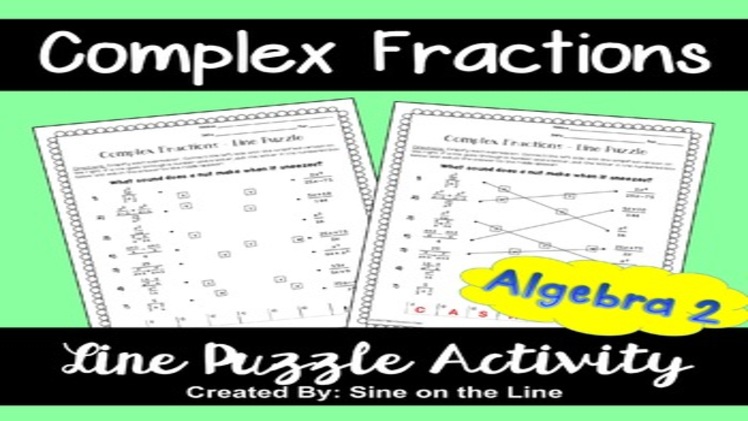Introduction
Complex fractions can appear daunting at first glance, but with careful analysis and understanding, they can be simplified to more manageable expressions. In this article, we will explore how to find equivalent expressions for complex fractions, providing a step-by-step guide to demystifying these mathematical puzzles.
Understanding Complex Fractions
A complex fraction is an expression where both the numerator and denominator contain fractions. They may seem intricate, but they can be simplified by following specific rules and techniques.
Multiplying by the Reciprocal
One of the most effective ways to simplify a complex fraction is by multiplying both the numerator and denominator by the reciprocal of the denominator within the main fraction.
For example, given the complex fraction:
bashCopy code
a/b ————– c/d + e/f
To simplify, we multiply both the numerator and denominator by f/c:
bashCopy code
(a/b) * (f/c) ————————- (c/d) * (f/c) + (e/f) * (f/c)
This simplifies to:
markdownCopy code
af/bc ——————– df + ec
Combining Fractions
In some cases, it may be possible to combine fractions within the complex fraction before attempting further simplification.
For instance, consider the complex fraction:
bashCopy code
1 1 ——- + —— a/b + c/d
First, find a common denominator, which is bd:
bashCopy code
d b ——- + —— ad/bd cb/bd
This simplifies to:
markdownCopy code
d + b ——— ad + cb
Using the Least Common Denominator (LCD)
In more complex scenarios, identifying the least common denominator (LCD) can be instrumental in simplifying complex fractions. The LCD is the smallest multiple that both denominators share.
For example, consider the complex fraction:
diffCopy code
3 2 ——- + —— 4/5 3/8
The LCD here is 40. Adjust the fractions accordingly:
diffCopy code
24 25 ——– + ——– 40 40
This simplifies to:
markdownCopy code
49 —— 40
Substituting Variables
In certain mathematical contexts, substituting variables can lead to simpler expressions. This approach is particularly effective in algebraic equations involving complex fractions.
For instance, consider the complex fraction:
cssCopy code
x 1 ——— + ——- a/x + b
Let u = a/x. Then the expression becomes:
cssCopy code
u 1 ——— + ——- u + b
Following simplification, the expression can be re-substituted to find the final equivalent.
Applying Cross-Multiplication
In some instances, cross-multiplication can facilitate simplification. This technique is especially useful when working with linear equations.
For example, consider the complex fraction:
cssCopy code
x 2 ——— + ——- a + x b
Cross-multiplying gives:
cssCopy code
a + x 2 ——– + ——- a + x b
This simplifies to:
cssCopy code
a + x + 2(a + x) ——————— b(a + x)
Factoring and Cancelling
In certain cases, factoring out common terms can lead to simplification. This approach is particularly relevant when dealing with polynomial expressions.
For example, consider the complex fraction:
markdownCopy code
x^2 – 9 ——— x^2 – 3x
Both the numerator and denominator can be factored:
scssCopy code
(x + 3)(x – 3) ————— x(x – 3)
Canceling out the common term (x – 3), the expression simplifies to:
markdownCopy code
x + 3 ——- x
Conclusion
Complex fractions may initially appear challenging, but with the right techniques and understanding of mathematical principles, they can be simplified to more manageable expressions. By employing methods such as multiplying by the reciprocal, combining fractions, using the LCD, substituting variables, applying cross-multiplication, and factoring, mathematicians can unlock the mysteries hidden within complex fractions. This knowledge empowers individuals to confidently tackle mathematical problems that may initially seem daunting.

